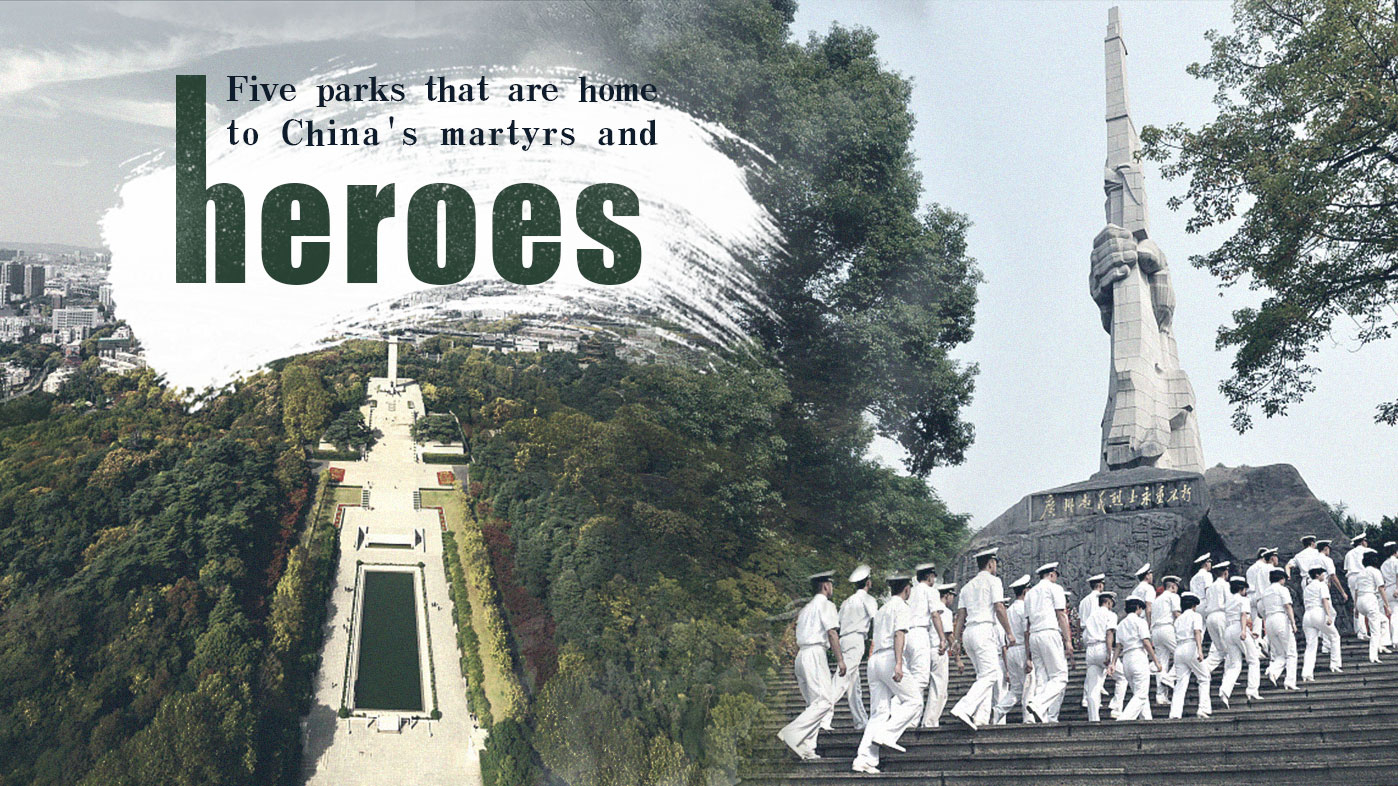Upon China's Qingming Festival of remembering those who left us, people pay tribute to past heroes who laid the foundation for a brighter future. Today we introduce five renowned cemetery parks in China where heroes and martyrs rest their souls. They are the Guangzhou Uprising Martyrs Cemetery, Yuhuatai Memorial Park of Martyrs, Babaoshan Martyrs Cemetery, Jinjiluyu Martyrs Cemetery and the Jinggangshan Martyrs Cemetery.
Guangzhou Uprising Martyrs Cemetery
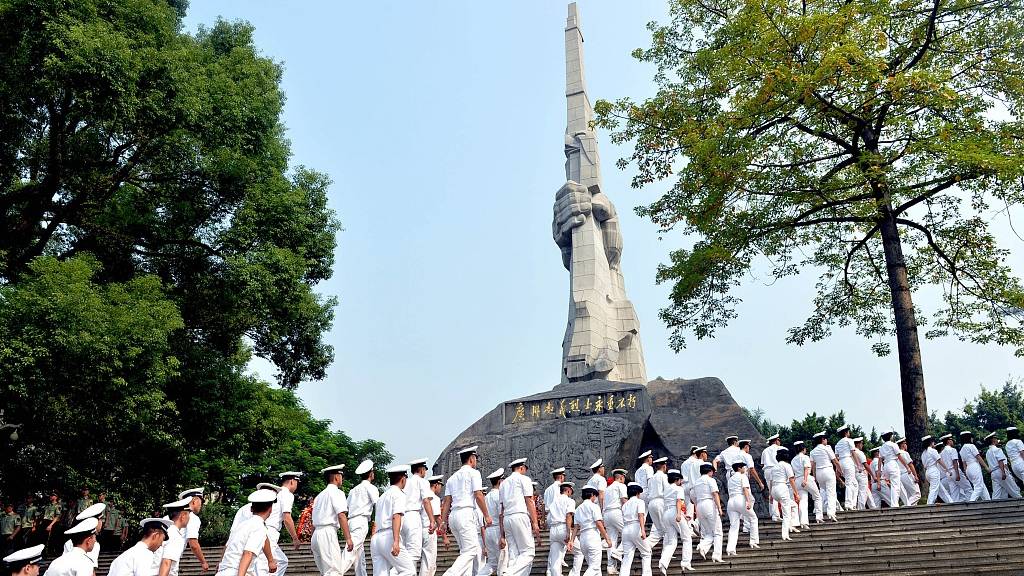
Navy soldiers at the Guangzhou Uprising Martyrs Cemetery. /VCG Photo
Navy soldiers at the Guangzhou Uprising Martyrs Cemetery. /VCG Photo
Guangzhou Uprising Martyrs Cemetery was built in memory of the 5,700 martyrs who sacrificed their lives in the Guangzhou Uprising led by the Communist Party of China on December 11, 1927.
Guangzhou Uprising, Nanchang Uprising and Autumn Harvest Uprising signaled the beginning of the independent armed revolution led by the CPC as well as a great attempt to establish a red political power in a big city for the first time.
As written on the cemetery's official website, "Spanning an area of 186,000 square meters, the cemetery is divided into two zones - the cemetery and the garden. The cemetery, surrounded by green pine trees and red flowers, highlights serenity and solemnity with famous buildings such as The Monument to Guangzhou Uprising, The Tomb of Guangzhou Commune Martyrs, The Tomb of Marshal Ye Jianying, The Tomb of "Four Martyrs," Main Entrance Arch, as well as the Cemetery Avenue. The garden boasts a typical architectural style of Lingnan gardens with rich greenery and landscape."
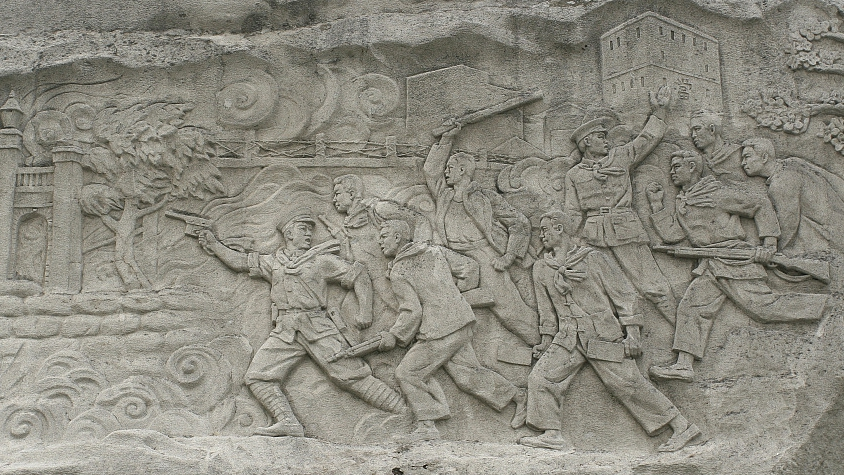
Relief sculpture on the monument at the Guangzhou Uprising Martyrs Cemetery. /VCG Photo
Relief sculpture on the monument at the Guangzhou Uprising Martyrs Cemetery. /VCG Photo
Travel Tips:
Address: No. 92 Zhongshan Second Road, Yuexiu District, Guangzhou, Guangdong Province, China.
Transportation: Take subway Line 1, and get off at the "Martys Cemetery" station.
Yuhuatai Memorial Park of Martyrs
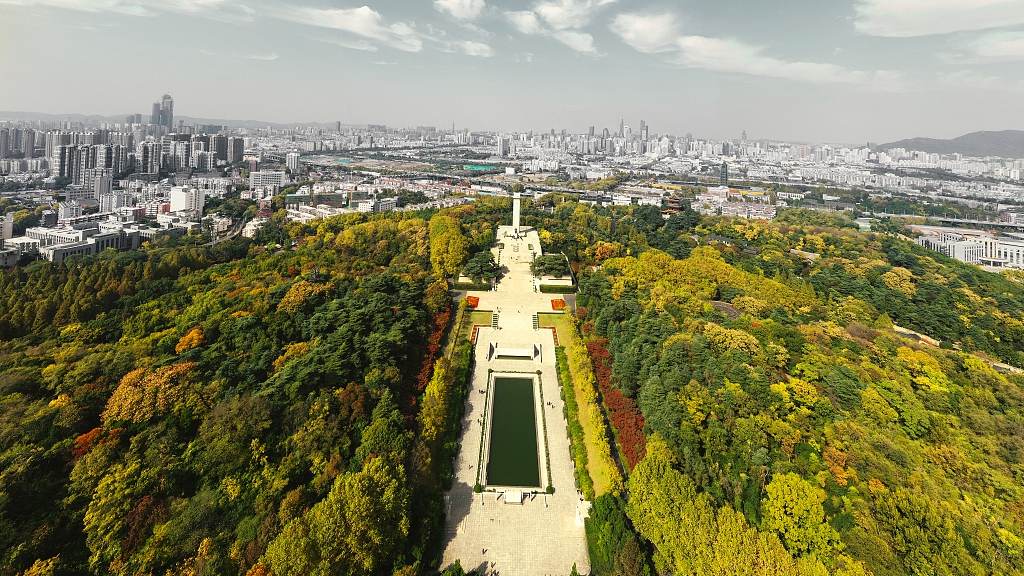
An overview of Yuhuatai Memorial Park of Martyrs. /VCG Photo
An overview of Yuhuatai Memorial Park of Martyrs. /VCG Photo
Yuhuatai Memorial Park of Martyrs is located in the south of Zhonghuamen Gate, Nanjing City, Jiangsu Province. It is built on a mountain of about 60 meters high and 1000 meters long. The place was named "Yuhuatai" for its colorful pebbles and a Buddhism story about "flowers falling like rain" in ancient Chinese history. "Yu" means rain, "hua" flower, and "tai" means platform.
After the founding of the People's Republic of China, the Yuhuatai Memorial Park of Martyrs was built in 1950 to memorize the martyrs and inspire the future generations.
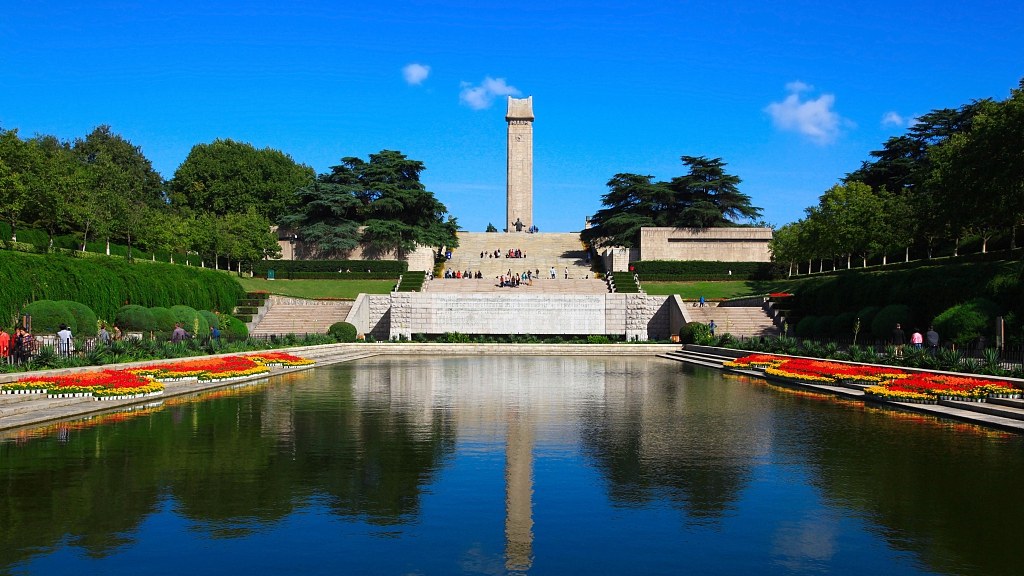
A closer look at the memorial monument at Yuhuatai Memorial Park of Martyrs. /VCG Photo
A closer look at the memorial monument at Yuhuatai Memorial Park of Martyrs. /VCG Photo
The cemetery has natural forests and historical sites, with the martyrs' cemetery as the main body, functioning for education and sightseeing purposes. There are 270,000 trees of 238 kinds in the park. Main architects are the revolutionary martyrs' monument, memorial hall, martyrs group sculpture, monument gallery, memorial bridge, martyrs' tombs, red scarf square and Yuhuashi museum.
The monument was built on the main peak, and the memorial hall displays the heroic deeds of 127 martyrs. The monument gallery is made up of 180 pieces of granite, engraved with excerpts from three classic works including "The Communist Manifesto," totaling 47,043 Chinese characters.
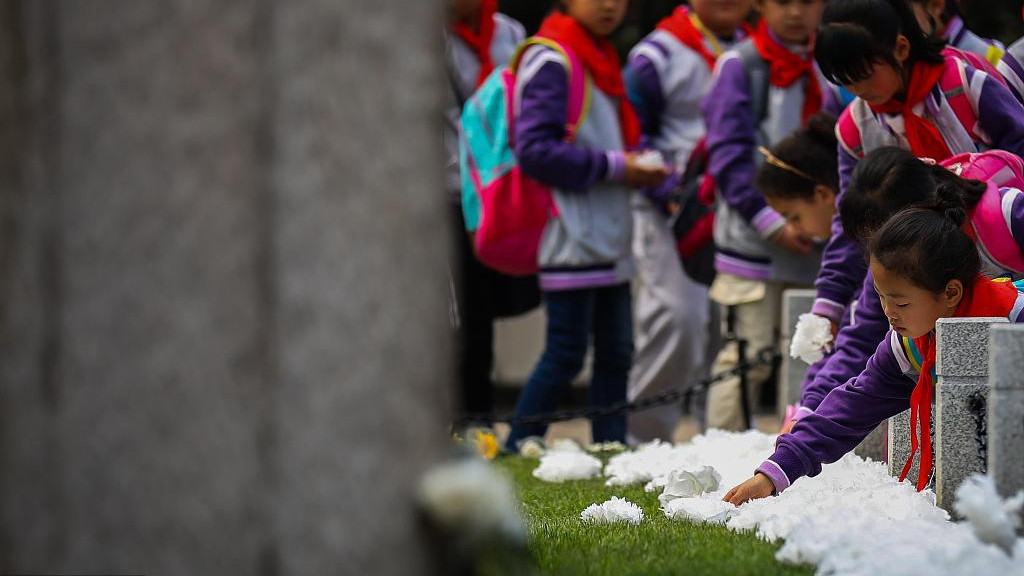
School children dedicate flowers at the monument in Yuhuatai Memorial Park on April 3, 2019. /VCG Photo
School children dedicate flowers at the monument in Yuhuatai Memorial Park on April 3, 2019. /VCG Photo
Travel Tips:
Address: No.215 Yuhua Road, Yuhuatai District, Nanjing, Jiangsu Province, China
Transportation: Take Metro Line 1 to the Zhonghuamen Station, and walk 700 meters to the north gate of the park.
Babaoshan Martyrs Cemetery
The Babaoshan Martyrs Cemetery was established in November 1949. It is a major historical and cultural site protected at the national level.
After the peaceful liberation of Beijing in 1949, following Zhou Enlai's instructions to establish a martyrs cemetery, Beijing city government formed a group upon this project and finally chose to build the cemetery at the Huguo Temple in Babaoshan.
In 1950, the Beijing Municipal People's Government converted the Huguo Temple of Babaoshan into a cemetery for martyrs. It is said that the architecture style of the cemetery was designed by China's renowned female architect, Lin Huiyin.
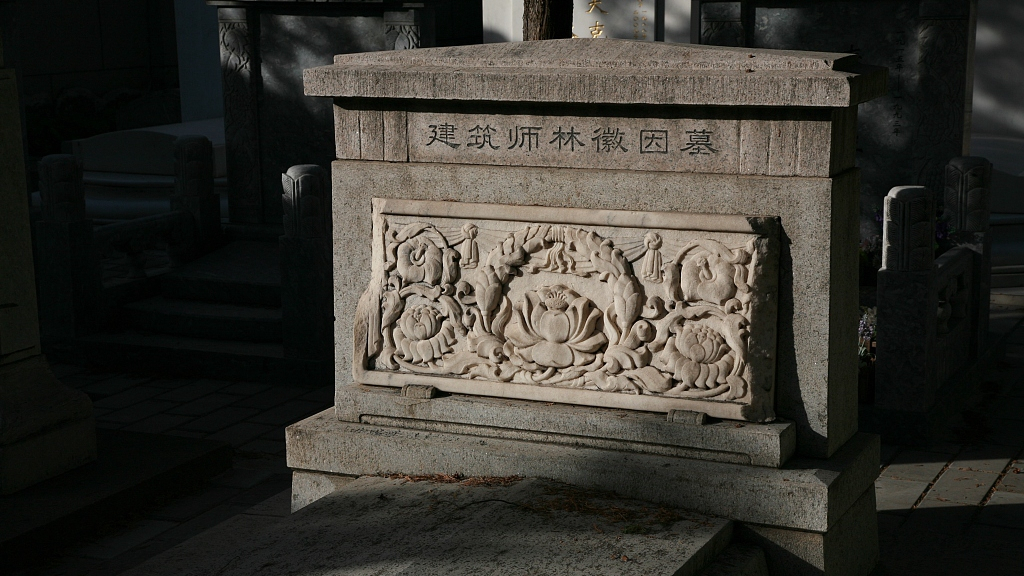
The tomb and monument of the architect, Lin Huiyin, at Babaoshan Martyrs Cemetery. /VCG Photo
The tomb and monument of the architect, Lin Huiyin, at Babaoshan Martyrs Cemetery. /VCG Photo
Babaoshan Martyrs Cemetry is home to many China's heroes, including Chinese marshals of Zhu De, Nie Rongzhen, Luo Ronghuan, as well as Qu Qiubai, one of the leaders of the Chinese Communist Party in its early years.
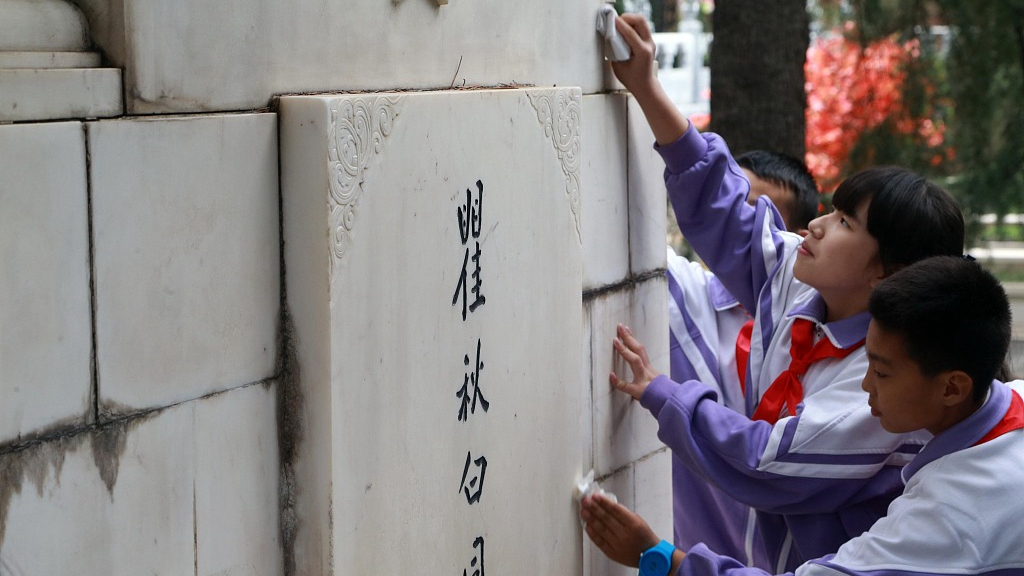
School children at Qu Qiubai's tomb and monument. /VCG Photo
School children at Qu Qiubai's tomb and monument. /VCG Photo
Travel Tips:
Address: No.9 Shijingshan Road, Shijingshan District, Beijing, China.
Transportation: Take Metro Line 1 to the Babaoshan Station, and walk north along the Shangzhuang Avenue for 1,000 meters.
Jinjiluyu Martyrs Cemetery
"Jinjiluyu" stands for four Chinese characters, each representing a province, "jin" for Shanxi Province, "ji" for Hebei Province, "lu" for Shandong Province, and "yu" for Henan Province.
The construction of this Martyrs Cemetery was decided in March 1946, with the construction completed in 1950. It was the first memorial construction of its kind in China. The cemetery consists of northern and southern parts covering 213,000 square meters. Main architectures include Martyrs' Tower, Tomb of the People's Heroes, Exhibition halls of Jinjiluyu history, Memory Hall of General Zuo Quan, Martyrs Cemetery of People's Liberation Army, etc. More than 200 Chinese combat heroes rest here.
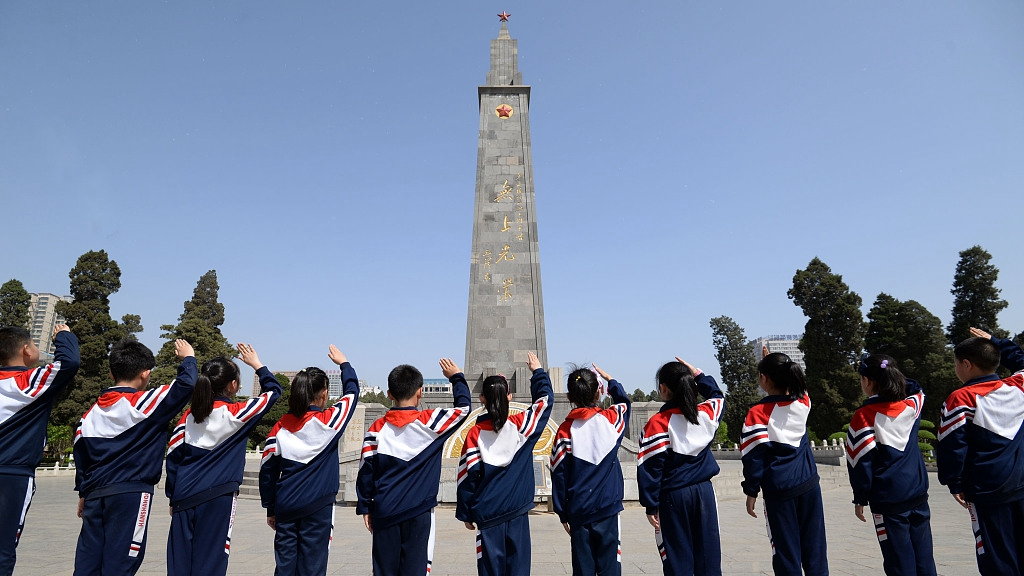
School children solute to the Martyrs' Tower in Jinjiluyu Martyrs Cemetery. /VCG Photo
School children solute to the Martyrs' Tower in Jinjiluyu Martyrs Cemetery. /VCG Photo
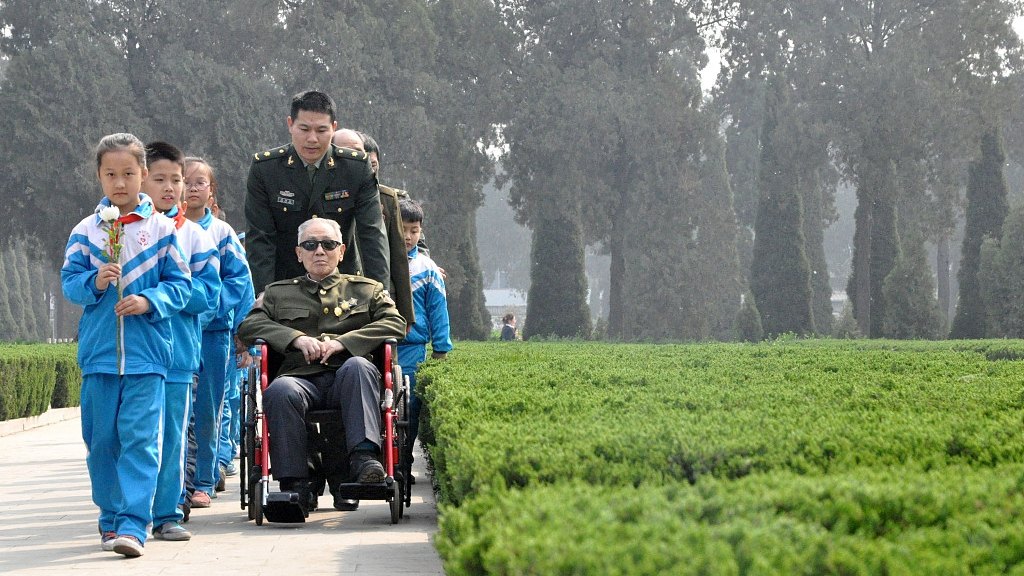
Children walk with a Chinese veteran in the park. /VCG photo
Children walk with a Chinese veteran in the park. /VCG photo
Travel Tips:
Address: No. 60 Lingyuan Road, Handan City, Hebei Province, China.
Transportation: Bus Line 2, 9, 11, 13, 23, and 28 in Handan City can get you to the Jinjiluyu Martyrs Cemetery.
Jinggangshan Martyrs Cemetery
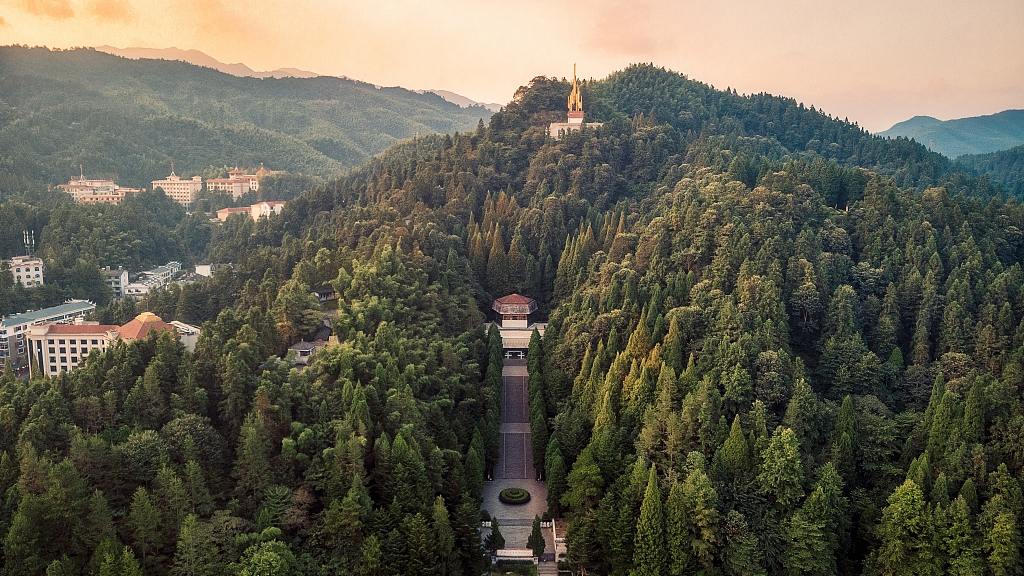
An overview of Jinggangshan Martyrs Cemetery. /VCG Photo
An overview of Jinggangshan Martyrs Cemetery. /VCG Photo
In October 1987, the Jinggangshan Martyrs Cemetery was built on a mountain in the north of Ciping District, Jinggangshan City, Jiangxi Province. The mountain's look bared resemblance with the look of a Luohan Buddha statue. It faces south and covers an area of 26.68 hectares. The entire cemetery is composed of five parts: the cemetery gate, the memorial hall, monument gallery, the memorial monument, and the sculpture garden.
There are two sets of stairs. The first set has 49 grades, which symbolizes the founding of New China in the year of 1949. The second set has 60 grades, which means the Martyrs Cemetery was built on the 60th anniversary of the establishment of the Jinggangshan Revolutionary Base that took place in 1927 in China's history.
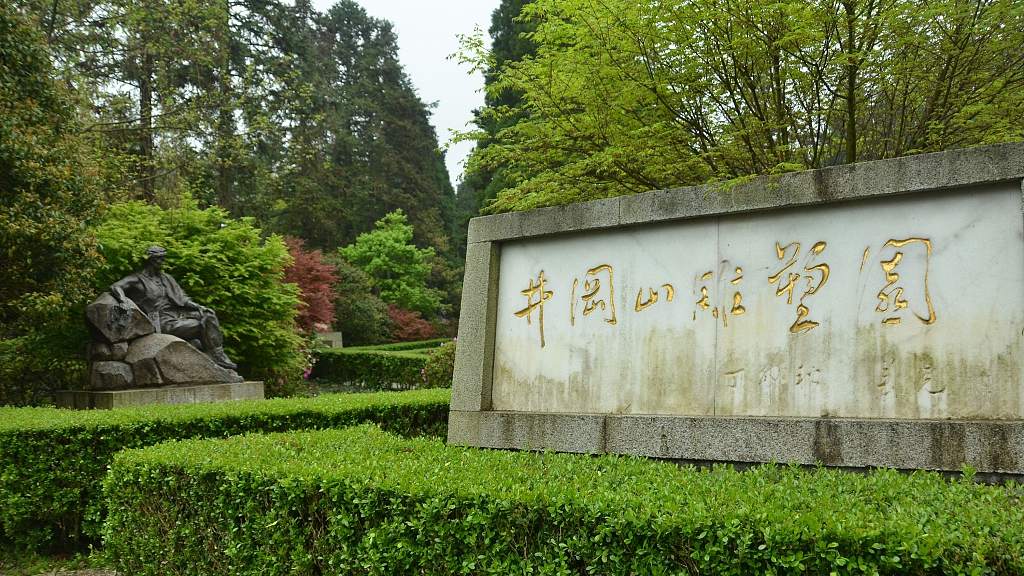
The sculpture garden in Jinggangshan Martyrs Cemetery. /VCG Photo
The sculpture garden in Jinggangshan Martyrs Cemetery. /VCG Photo
Travel Tips:
Address: Hongjun South Road, Ciping District, Jinggangshan City, Jiangxi Province
Transportation: After arriving at Jinggangshan by plane or train, take a half-hour taxi, or drive to the Ciping Scenic Area.
(Top image designed by Liu Shaozhen)

